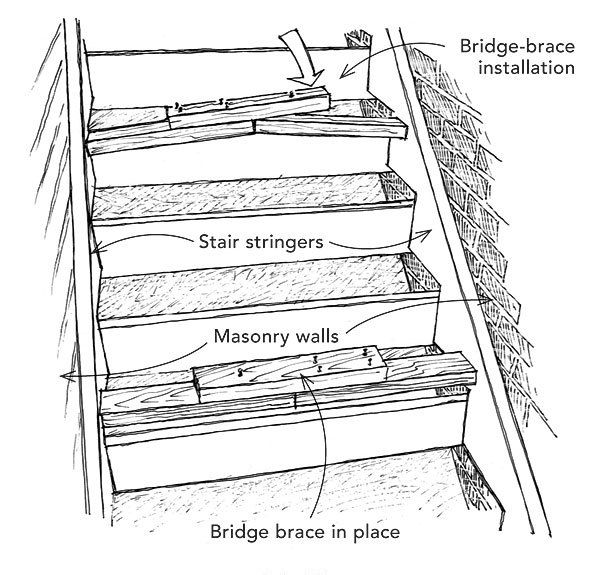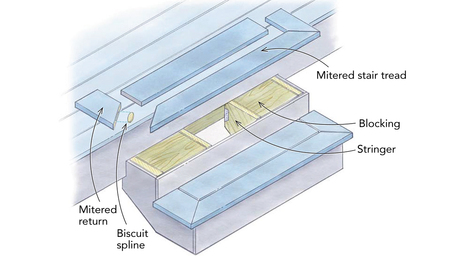
When I was a young apprentice, I remember being impressed when this trick was shown to me. While forming a set of concrete stairs, we needed to position the stringers securely between the two adjacent masonry walls to hold the riser forms in place. Rather than nail the stringers into the walls, thus scarring them with holes, the journeyman showed me how to use what he referred to simply as bridge braces.
We first cut a 2×4 1/4 in. longer than the space between the two stringers. Then we cut this 2×4 in half. When placed end to end, the resulting two pieces were now 1/8 in. longer than the space between the stringers. We then nailed a 2×4 “bridge” piece to one of the resulting two pieces as shown in the drawing at left. Pressing the bridge piece downward splices the two pieces together, exerting impressive pressure against the stringers. Duplex nails hold the assemblies together. To strip the forms, we pulled a few of the duplex nails, and the forms pretty much fell apart.
Sam Foerster, Vancouver, None
Edited and Illustrated by Charles Miller
From Fine Homebuilding #206






























View Comments
How do you finish the top of your tread? It looks like your bridge braces right in the way.
Hey Sean,
That is a good comment given the sketch. This is my tip and I did the sketch as well. I assume your comment is inspired by the position of the bottom of the two bridge braces, as the top one would give room to have the float and trowel move above the bridge brace. Anyhow in practice, you can put them where you like and it would be a good idea as you point out to put them where they won’t be in the way.
By the way I use this device for so much more than just holding stringers in place. When I need to push something a small distance that is hard to move for example. The principle of the amazing force exerted may possibly be demonstrated by this example. Suppose you have two walls 10 feet apart. Place two 2x4’s that are each a 1/16” longer than 5 feet - end to end in that space. They will only fit in that space with the ends resting on the floor if they are raised slightly off the floor where they meet. You can likely imagine the very great thrust created as you try and press them toward the floor.
SamHF, handy tip for multiple scenarios. I didn't require any explanation for the bottom bridge in the sketch - clearly in practice one would locate the bridge to be out of the way of other work.